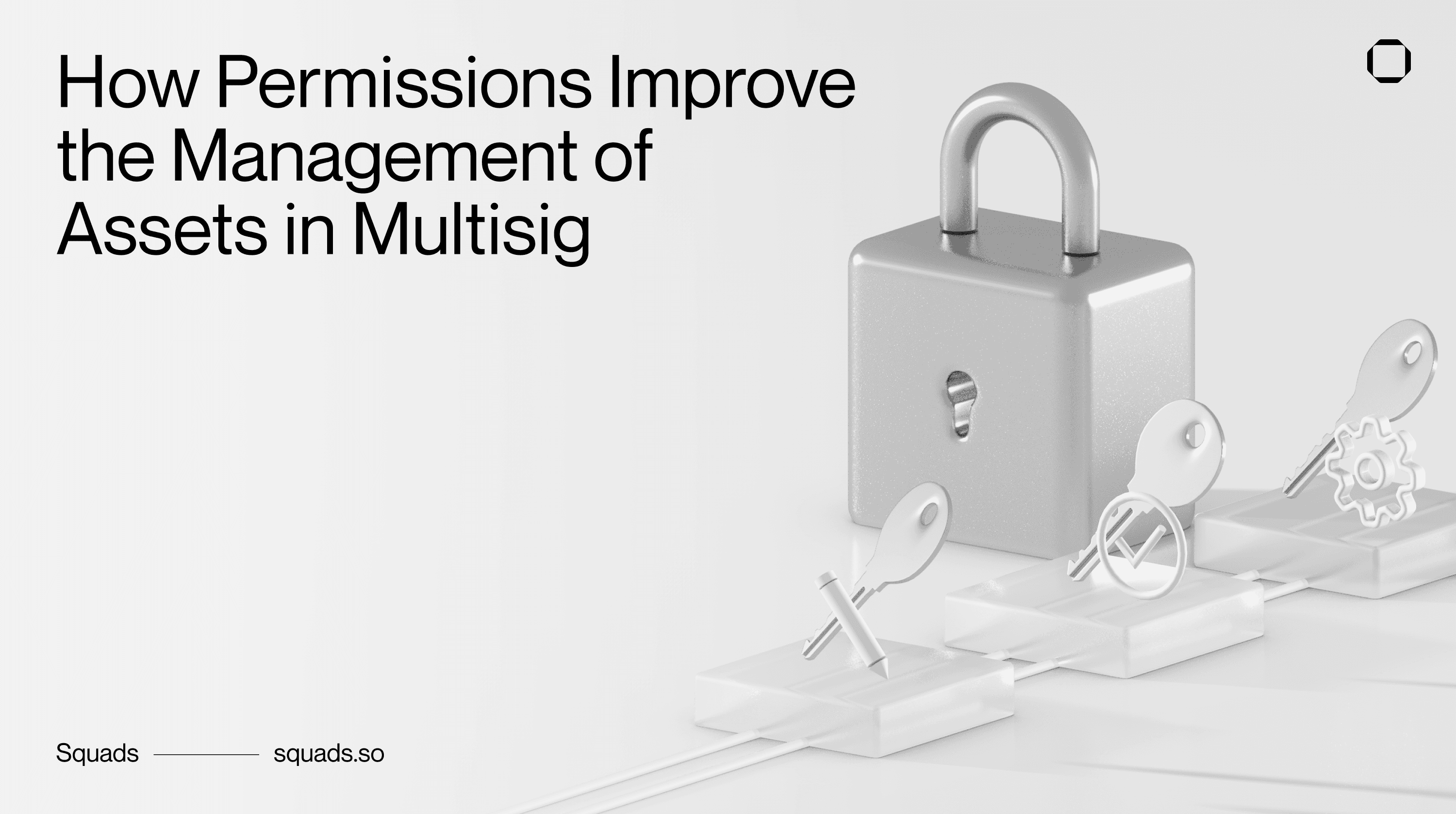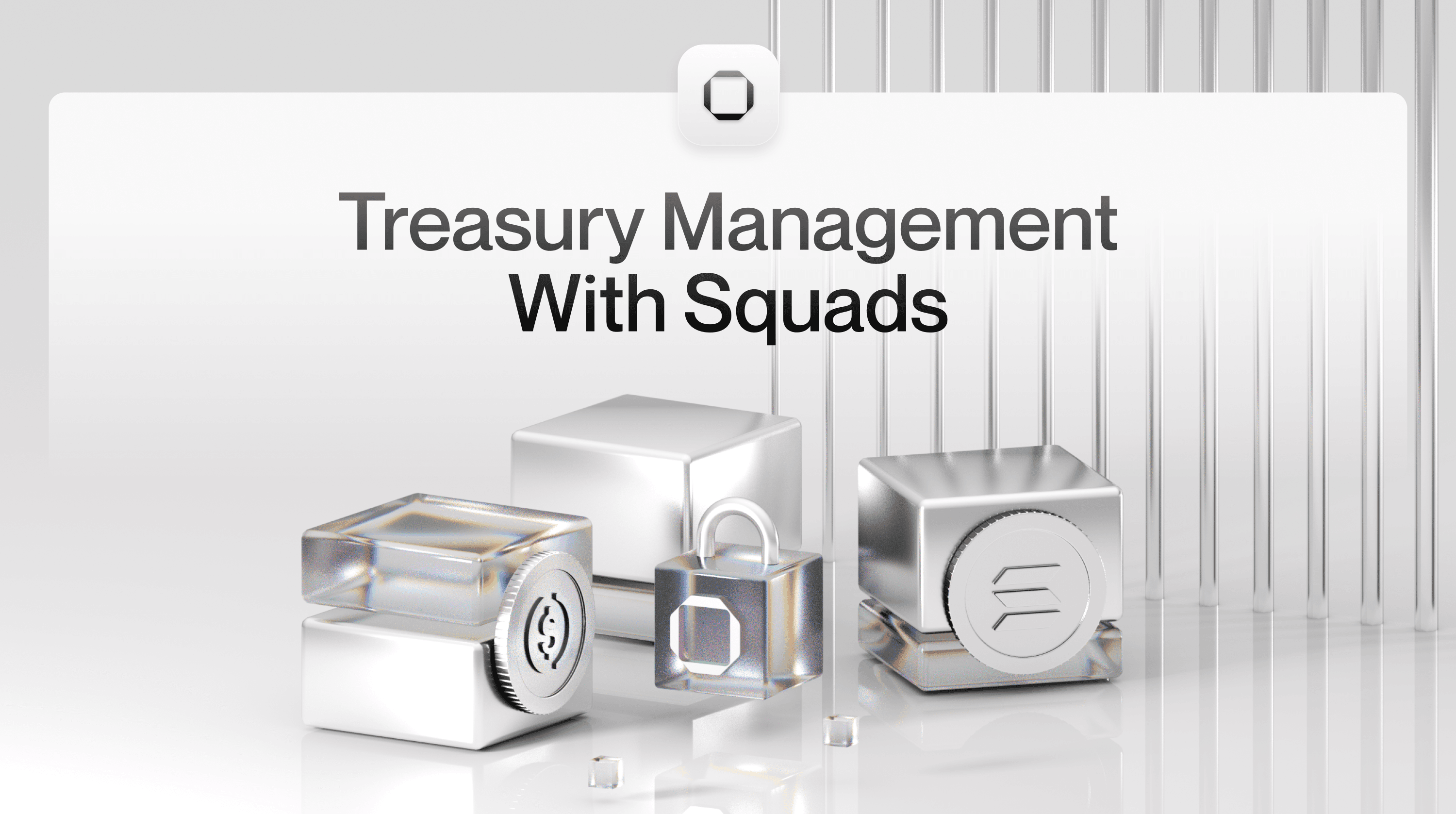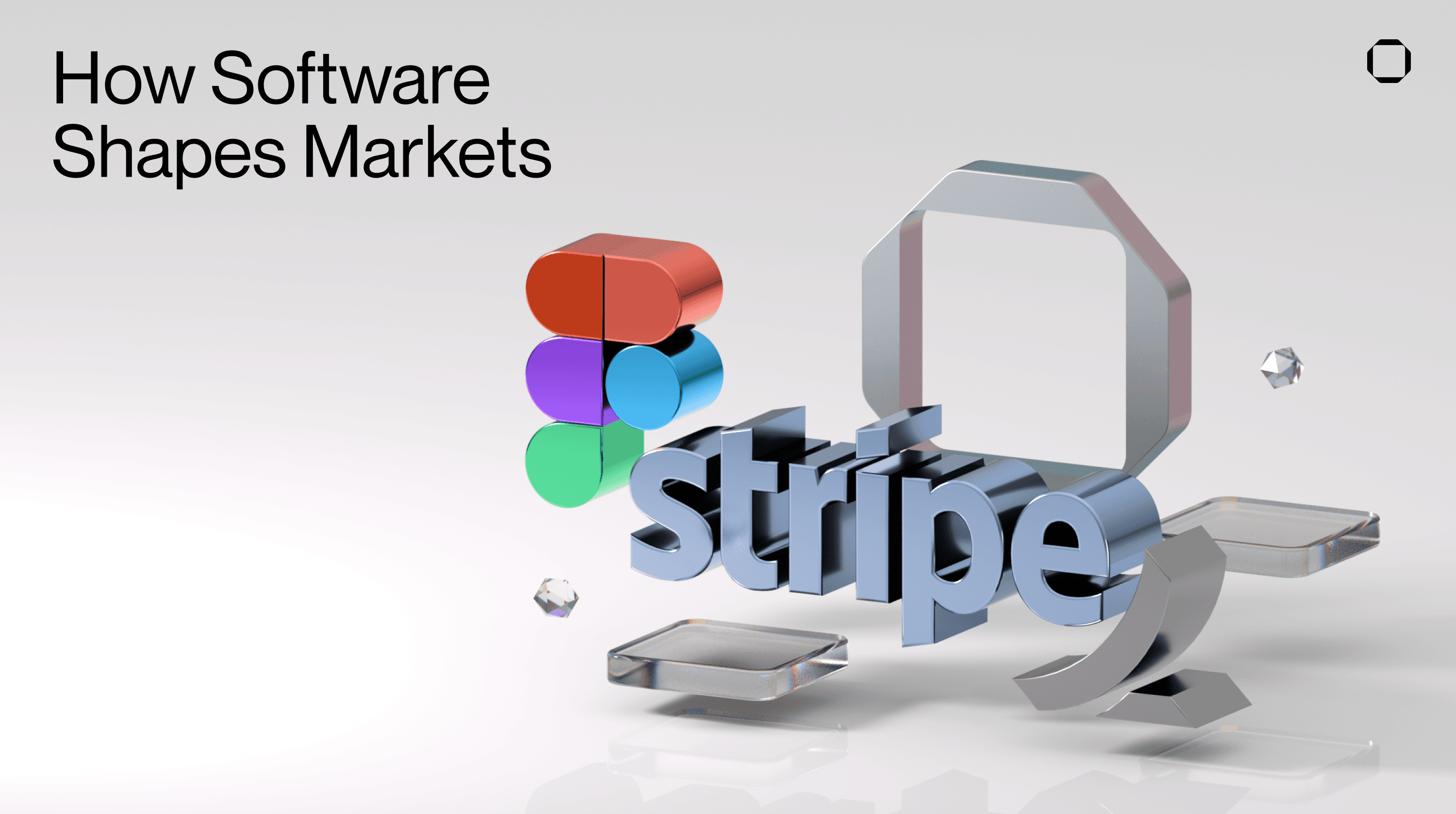Our new v4 program, which powers the Squads app, has introduced novel features making multisigs more powerful than ever on Solana. One of these new features is Permissions, a new approach for enabling granular control over the members of a multisig through roles.
This article is the first in our series highlighting the new features powered by Squads Protocol v4 and what use cases they enable for teams and organizations operating on Solana.
Enhancing Multisig Setups with Permissions
Multisigs are a powerful solution for managing on-chain assets collectively and securely. To execute a transaction in a multisig, it requires several signatures until a threshold is reached, eliminating single points of failure and reducing the risk of asset compromise.
In traditional multisig setups like Squads v3, all the members added have the same level of power, offering no room for customization at the organization level. This can lead to undesired situations where a member needed in the multisig for certain functions holds more power than necessary. Thus, this restricts the customization an organization might require to manage its assets, such as treasuries and programs, hindering it from fully operating on-chain.
This limitation is now gone with Squads Permissions, which enable for the first time teams and organizations to clearly define the role of each key/member in a Solana multisig and how transactions are approved.

Using Permissions, teams can now assign roles to each key/member of their multisig, enhancing the ways in which on-chain assets can be managed collectively. Squads Permissions includes three roles:
Proposer - can only create transactions for the multisig;
Voter - can only vote on proposed transactions for the multisig;
Executor - can only execute transactions that have reached the threshold.
One of the use cases of Permissions is to reflect organizational hierarchy. It allows for mirroring the specific rights and authorizations team members require for asset management, all while on-chain and governed by multisig consensus. Through roles, it ensures members can't execute or vote on transactions unless explicitly granted that authority.
Take for example a crypto project that requires to make financial decisions on the funds they recently raised from their Series A. With Squads Permissions, the co-founders can hold all three pivotal roles: Proposer, Voter, and Executor. The CFO, responsible for initiating expenditure requests, can be assigned the Proposer role. To provide their approval on these requests, they can also have the Voter role. On the other hand, team members like Marketing managers who need to be kept informed but may not play a pivotal role in fund allocations can be given the Proposer role.
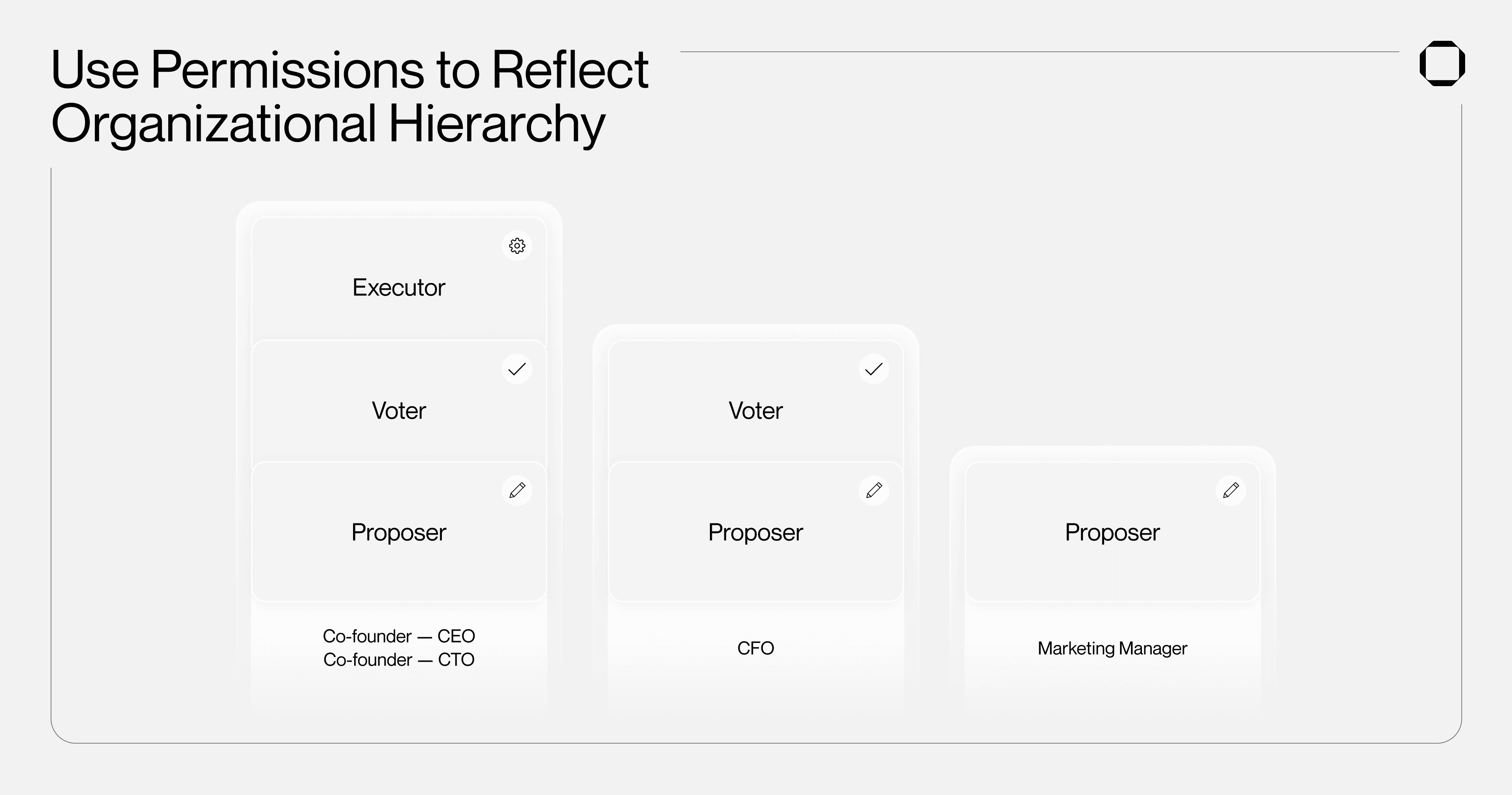
Crypto venture and liquid funds also require a transparent and efficient way to allocate and release funds. Using Permissions, individual fund managers can have the Proposer role, enabling them to create transactions to send funds to portfolio companies. The fund's investment committee, responsible for evaluating and endorsing investment decisions, can be assigned the Voter role. Meanwhile the fund's managing partner who oversees major decisions and has the final authority can hold the Executor role, ensuring that capital is allocated in alignment with the fund's strategy.
Community-driven groups like DAOs also need to manage their assets collectively. Here too, Permissions acts as a powerful solution. Active community members can use the Proposer role to suggest actions while elected members, who ensure proposals align with the goals of the group, can have Voter and Executor rights for final actions.
Permissions pave the way for entirely new setups for on-chain organizations. This not only benefits the Squads app but also dApps and protocols leveraging the v4 program for their offerings.
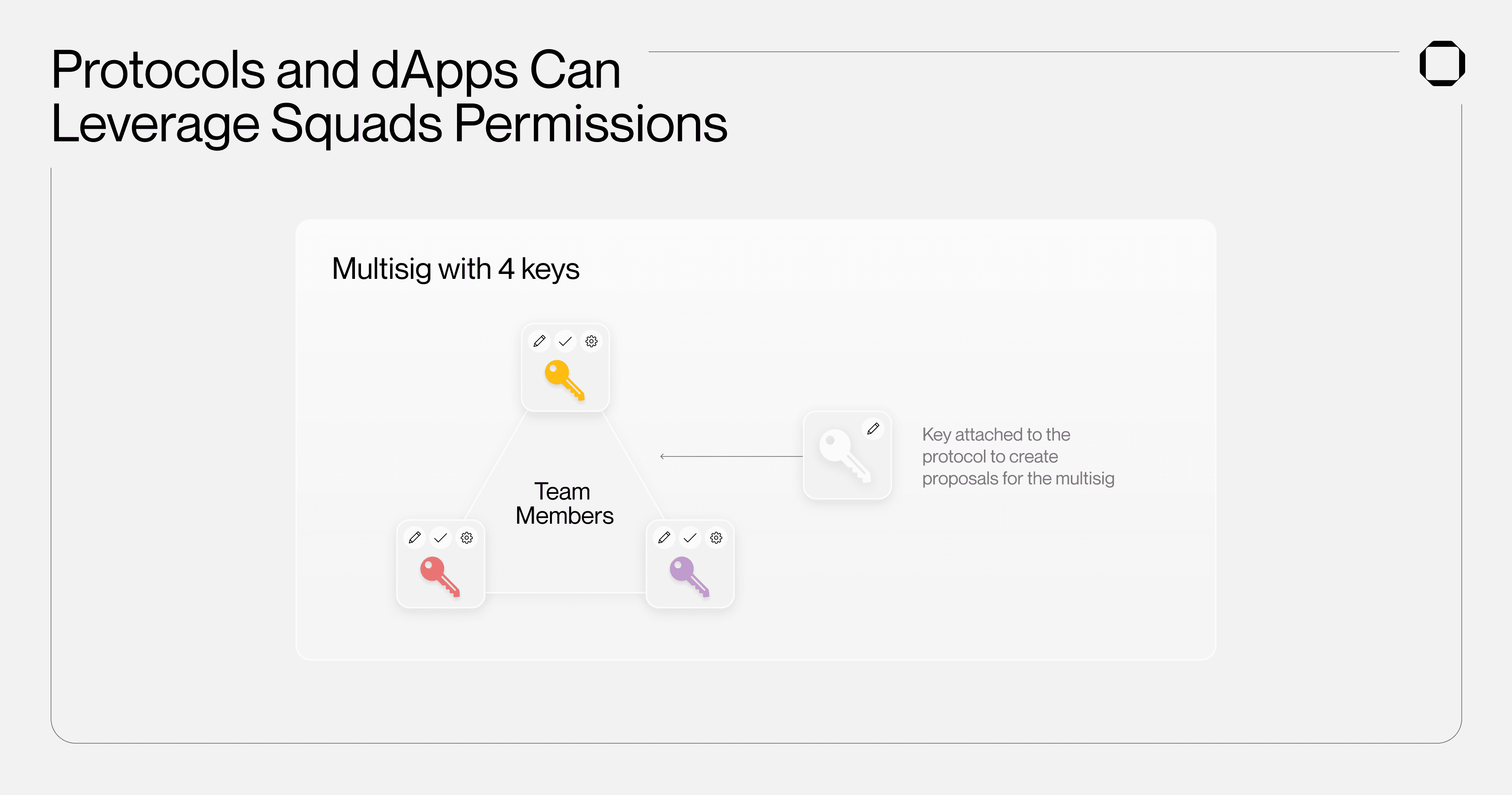
This is beneficial for protocols that for instance need a key to create transactions for team approval but wish to limit the power of that key in the event it gets compromised. Permissions can be viewed as a method to customize each multisig key's capabilities based on their designated roles or use cases. If you have an account dedicated solely to voting, you can use permissions to ensure it only participates in that specific action.
For example, SquadsX was designed to facilitate dApp transactions for a multisig. Therefore, it shouldn't hold more authority than required: wrapping dApp transactions into multisig transactions. That's the reason we prompt users in SquadsX to assign the proposer role to their SquadsX key. If it interacts with a malicious program and becomes compromised, it doesn't have the power to execute or block transactions in the multisig (which a voter could, for example). This significantly reduces the risk of potential attacks for the multisig.
Setting Up Permissions for a Multisig and Key Considerations
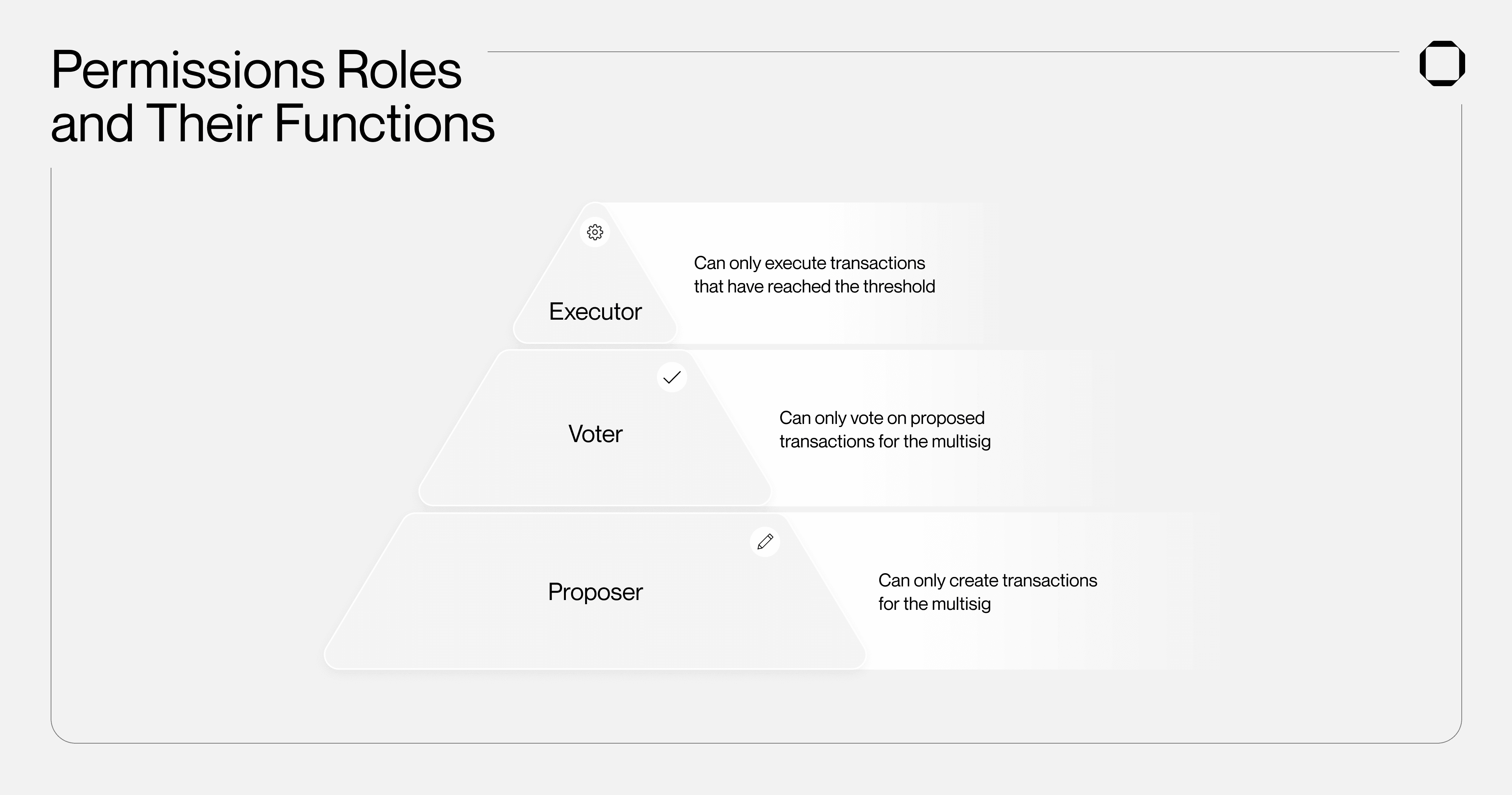
As we've seen, setting up permissions for a multisig lies in defining the role members will play. Individuals holding significant authority within the organization would likely necessitate having all roles, namely Proposer, Voter and Executor, within the multisig setup. This approach allows them to be involved in every aspect of the multisig - from creating transaction proposals to having decisive power over them, especially in scenarios of disagreement.
Conversely, there are members whose primary function is to remain informed about the daily operational activities of a project's assets, or simply create transaction proposals for higher ends. While their awareness is important, granting them the ability to execute or, in certain circumstances, vote on ongoing transactions could inadvertently affect operations. For such individuals, the Proposer role emerges as the optimal choice. It offers them the freedom to put forward transaction propositions without the added capabilities that could potentially affect the assets held within the multisig. This role is perfect for operators.
However, Permissions introduce new security considerations for a multisig setup. Removing major roles could prevent members from conducting and executing transactions, affecting the assets stored within. For instance, for a 2-3 multisig always ensure that at least two keys have voting and execution capabilities, with the remainder having voting rights, especially if one of the keys becomes compromised and needs replacement. It is alway essential to maintain an adequate number of members with "Voter" and "Executor" permissions to meet the confirmation threshold established for your Squad and to execute proposed transactions.
Lastly, roles and permissions within the multisig are mutable. Members can easily reassign them whenever needed through the Squads interface (or SDK for developers) without removing the key/member.
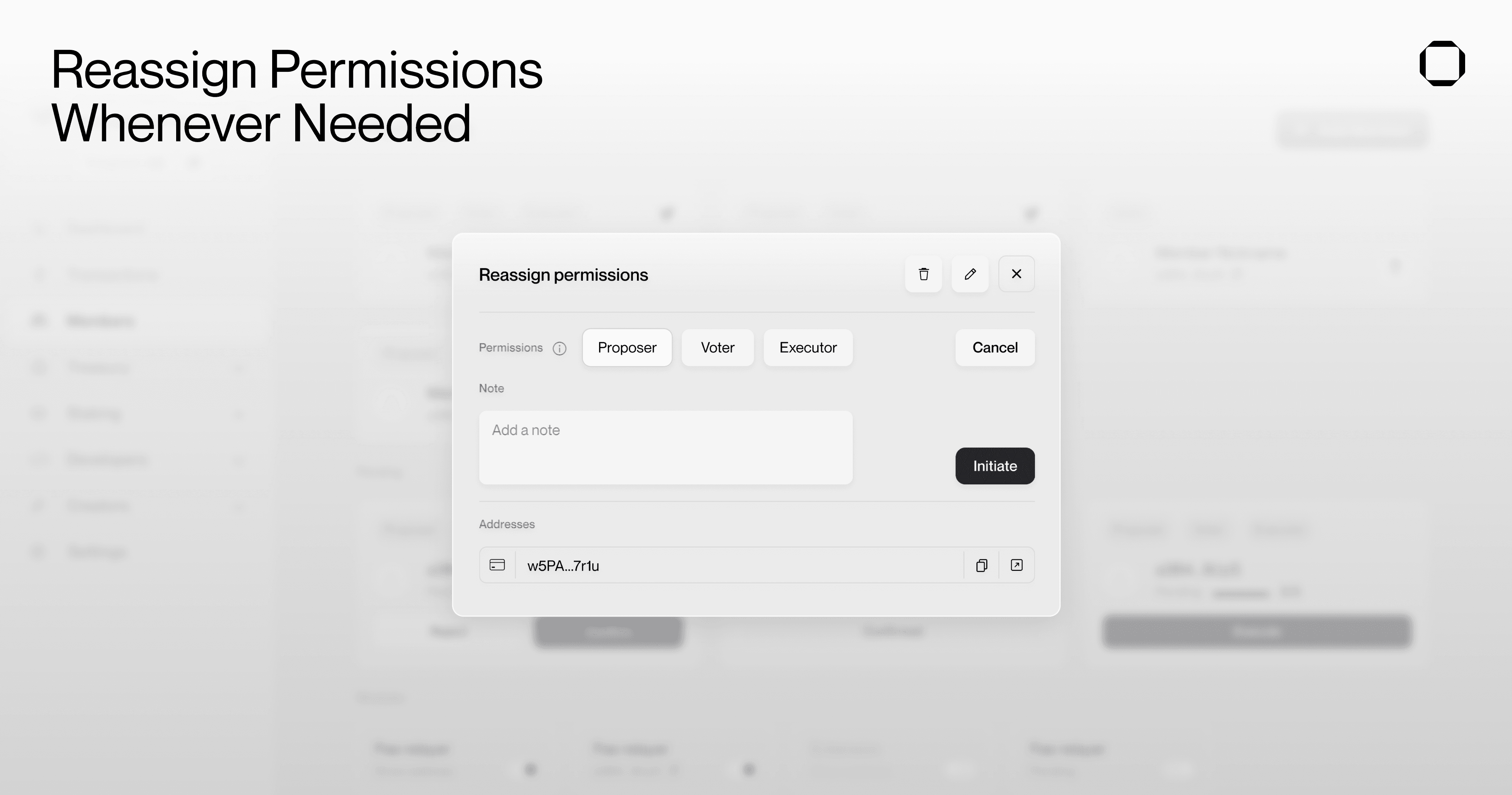
On the security front, Permissions are enabled by our new program, v4. Squads Protocol v4 has been audited three times by OtterSec, Neodyme and Trail of Bits. It is currently completing two formal verifications by Certora and OtterSec. Any project leveraging permissions through v4 directly benefits from the security measures that have been implemented, reducing both the cost and time required to build their product.
We have built Squads Protocol v4 to enable powerful multisig use cases. Permissions are only the tip of the iceberg of what it allows for. In our upcoming articles, we will dive into the plethora of features it offers, including spending limits and fee relayer.
You can learn more about the new Squads platform and v4 in our recent announcement article.
About Squads Labs
Squads Labs is a core contributor to Squads Protocol, the leading multisig infrastructure on Solana. In addition to helping maintain the protocol, Squads Labs makes the Squads platform, an institutional-grade multisig platform for Solana-based teams. The Squads platform helps web3-native teams manage and secure digital assets on-chain. To learn more about Squads Labs, please visit https://www.sqds.io/.
About Squads Protocol
Squads is a multisig protocol that helps web3-native teams manage and secure digital assets on-chain. Squads Protocol v3 is the first formally verified program on Solana. Squads Protocol v4 introduces time locks, spending limits, roles, sub-accounts, fee relayers, multiple-party payments, support for SquadsX and more. Squads v4 has already been audited by Neodyme, OtterSec, and Trail of Bits. It is currently undergoing two formal verifications, one by OtterSec and the other by Certora. To learn more about Squads Protocol, please visit https://squads.so/protocol
